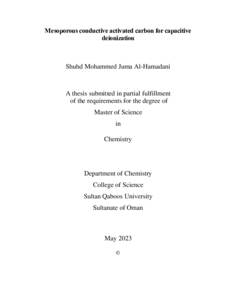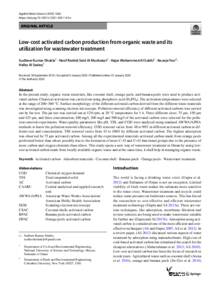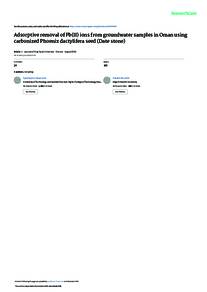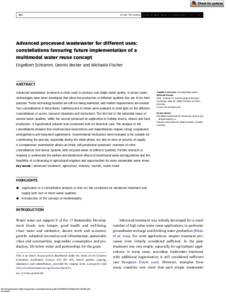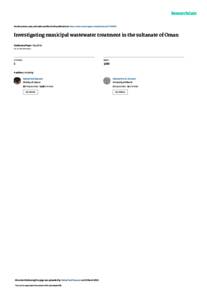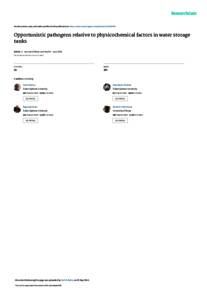Document
Mesoporous conductive activated carbon for capacitive deionization.
Other titles
الكربون المنشط الموصل والمتوسط المسامية لإزالة الأيونات بالسعة الكهربية
Publisher
Sultan Qaboos University.
Gregorian
2023
Language
English
Subject
English abstract
Capacitive deionization technology (CDI) is developing faster as an emerging alternative for
desalination. For a good performance of CDI, the electrode material should have a large surface
area, dominating mesoporous structure and surface hydrophilicity in addition to a conductive bulk.
In this thesis, activated carbon (AC) was prepared from the Mesquite tree using NaOH activation
at 800 ºC. AC showed a good graphitic content that was identified with x-ray powder diffraction
(XRD) in addition to a surface area of 640 m2
/g and dominating mesoporous structure. AC with
250 m size showed better CDI performance than AC with 500 m size. AC was oxidized to
produce oxidized activated carbon (OAC) and was doped with urea to produce UAC. Both OAC
and UAC showed less performance in CDI than AC due to their decreased surface area. AC was
mixed with reduced graphene oxide to enhance the electrical properties of AC, however, due to its
extremely low surface area, an enhancement of such mixture, as electrode material was not
achieved. Mixing AC with multiwalled carbon nanotubes (MWCNT1 and MWCNT2) in a ratio of
1: 7 (on a weight basis) showed enhanced salt removal efficiency and salt adsorption capacity than
AC. An electrode of AC/MWCNT1 showed the best CDI performance in the desalination of
brackish water sample collected from Al-Suwaiq.
Member of
Resource URL
Category
Theses and Dissertations

